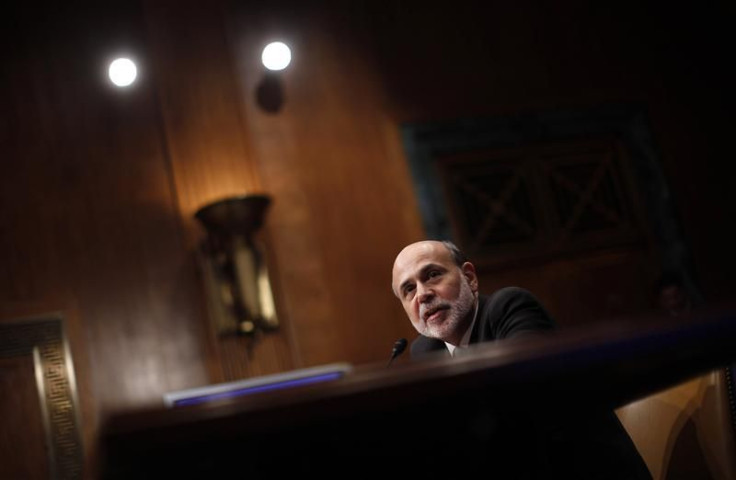Fed Minutes to Clarify Extent of Discord on Easing

(Reuters) -- A number of top Federal Reserve officials probably saw a need for additional monetary easing at the central bank's meeting last month, although there are few signals the central bank will move soon.
Minutes from the Fed's January meeting, which will be released on Wednesday, should offer more insight than usual into where officials stand on the question of whether more bond purchases are warranted to help a U.S. still-frail economy.
While the minutes always give a flavor of the policy debate, the central bank for the first time will provide qualitative details on officials' views on the Fed's near-record $2.9 trillion balance sheet.
This new information -- a counterpart to the first-ever interest rate projections released last month -- could suggest a greater willingness to ease further than was evidenced following the meeting. Last month, the Fed said it would likely leave rates near zero until at least late 2014, but offered no details on how it should handle its asset holdings.
The prospects for further easing appeared to be dampened by the latest employment figures, which showed a healthier job market than economists had expected. Still, many feel the economy is unlikely to gain enough vigor this year to satisfy the Fed, and they look for a third round of quantitative easing, probably through purchases of mortgage bonds.
I doubt the qualitative information from participants on the balance sheet would sway decisively on the near-term prospect of QE3, said Thomas Lam, an economist at OSK-DMG. While the hurdle for QE3 seems lower, I don't view this policy option as imminent at this time.
Speaking before a group of home builders on Friday, Fed Chairman Ben Bernanke stayed away from any explicit references to monetary policy, but made clear he still does not see the pace of economic growth as sufficient or satisfactory.
The state of housing has been an impediment to a faster recovery, he said. We need to continue to develop and implement policies that will help the housing sector get back on its feet.
The projections from Fed officials on when interest rates should rise off the floor were all over the place, ranging from this year to 2016. Given varying appetites within the Fed's policy committee for expanding or shrinking the central bank's portfolio, the minutes will likely put even more daylight between inflation hawks and doves.
Analysts are not expecting any hard data on balance sheet expectations but rather broad-brush descriptions of policymakers' leanings. The minutes could say, for instance, that some members favor additional stimulus now, while others would rather take a wait-and-see approach.
There is also a risk that the markets could get a hawkish surprise, for instance, if some officials appear to be making the case for near-term asset sales.
It will be an interesting trading day when this 'qualitative information' begins to include ruminations about when to start shrinking the nearly $3 trillion balance sheet and whether such shrinkage will happen through passive asset run-off or active asset sales, said Dana Saporta, an economist at Credit Suisse.
Bernanke has said that when the Fed chooses to tighten policy it will first raise the interest it pays on bank reserves, currently at 0.25 percent, only later resorting to selling some of the assets it accumulated in response to the financial crisis.
But not all officials may agree.
(Reporting by Pedro Nicolaci da Costa; Editing by Diane Craft and Maureen Bavdek)
© Copyright Thomson Reuters 2024. All rights reserved.











